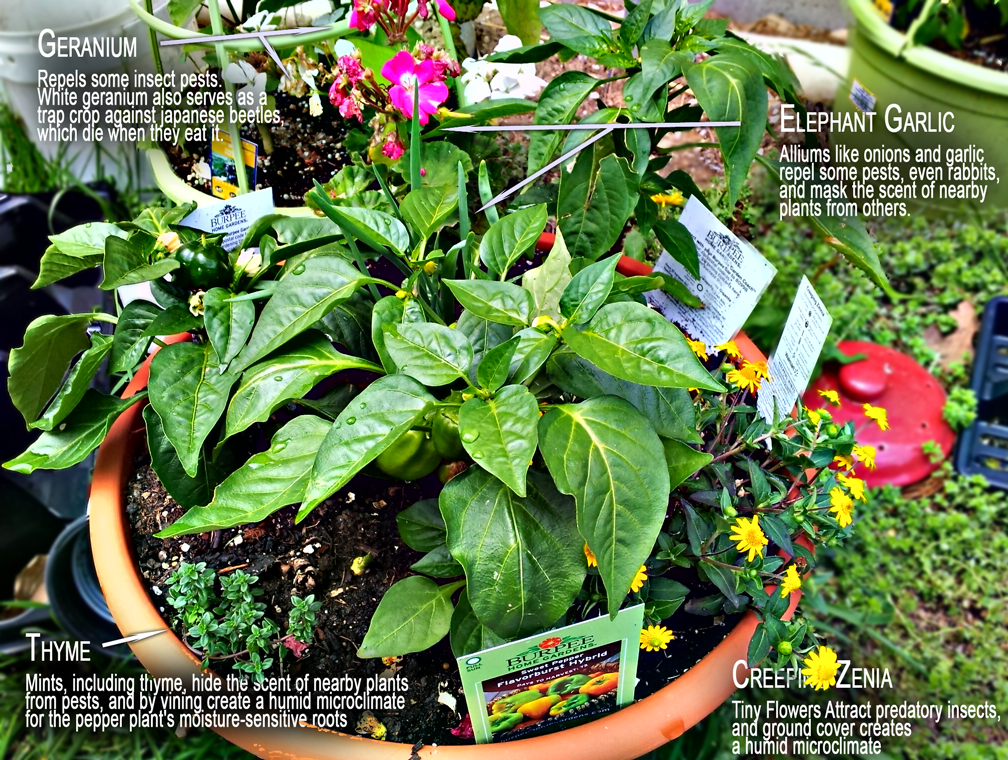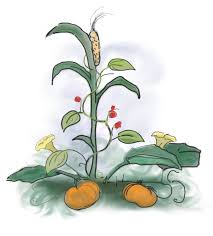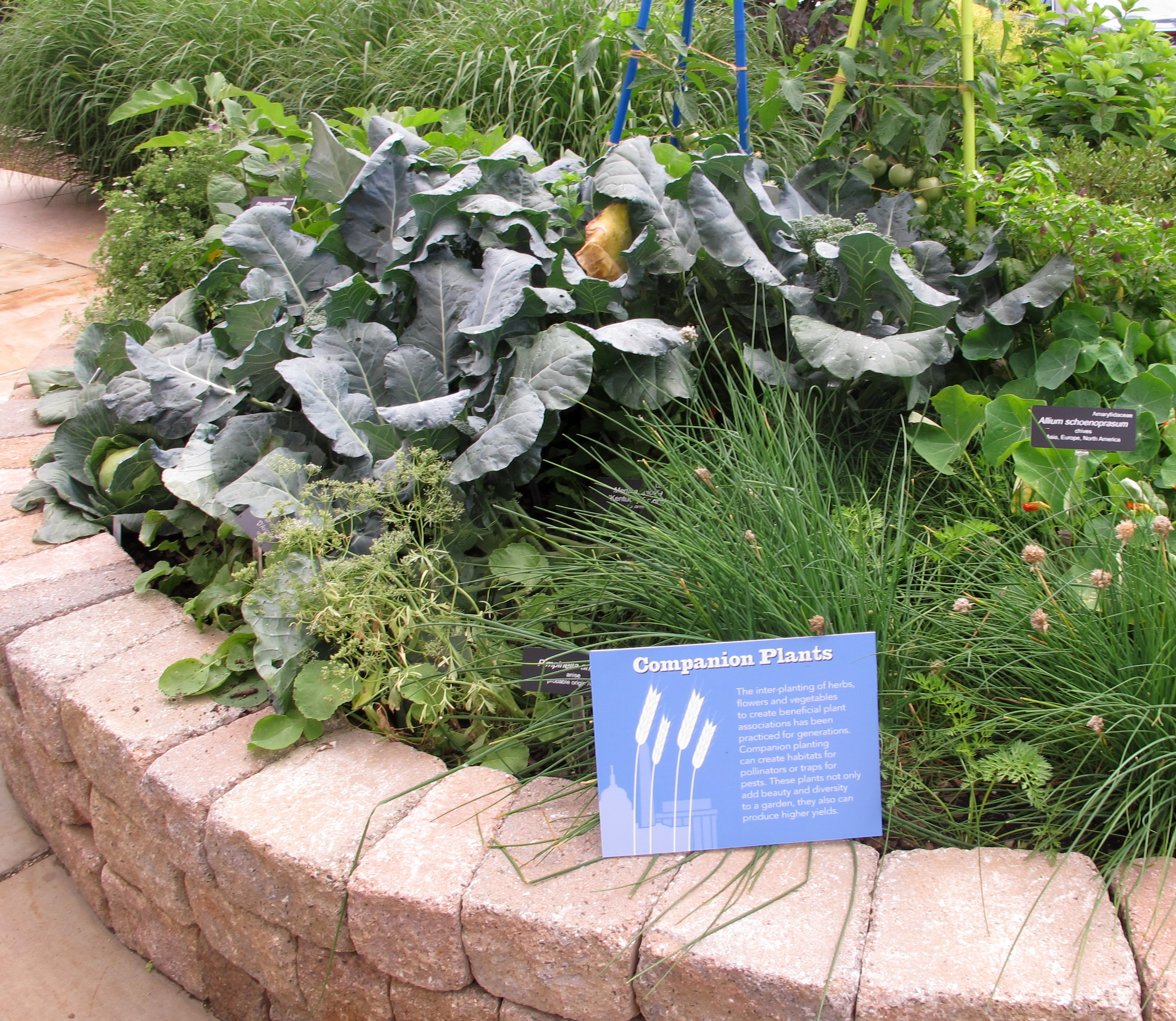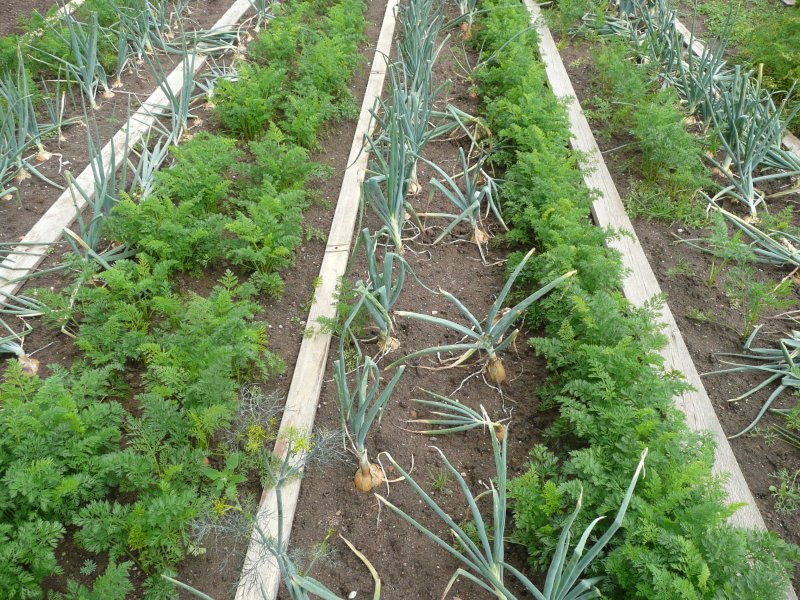Many new gardeners ask me about companion planting, afraid that if they put the wrong combination of plants near each other, then they will spell certain doom for their gardens. Unfortunately, when you look online for guides on companion planting, you often find lists of contradictory information. Are cabbages and tomatoes compatible or not? Some lists say that the tomatoes help keep cabbage worms off brassicas. Others tell you that they are antagonistic towards each other, but give zero explanation as to why this conclusion was reached. And that’s my main problem with the whole idea of companion planting, what scientific evidence, if any, backs up all of these recommendations?
A little digging into the modern history of companion planting shows some kind of wacko “studies”, involving “sensitive crystallization tests.” Based on how a mixture of plant material and certain chemicals evaporated, these “researchers” drew conclusions about plant compatibility. And this is forming the basis of many of the recommendation lists you can find on the internet. I don’t know about you, but I need a little more evidence than someone’s subjective opinion on how nice some evaporation crystals looked.
Thankfully, a publication by ATTRA called Companion Planting & Botanical Pesticides: Concepts & Resources, does lay out what science is available on this topic. While there is very little evidence to support most of the traditional plant combinations listed on the internet, there are a few interactions that are worth integrating into your garden. I will briefly go over these topics, from most to least important for home gardeners to use, in my opinion.
Nitrogen Fixation
- Legumes, mainly beans and peas, have a symbiotic relationship with soil bacteria that allow them to fix nitrogen from the air into the soil. While this mainly benefits the individual bean plant, some of this nitrogen spills out into the root zone around the plant. Planting nitrogen hungry plants next to beans will result in better growth for these companions. These include corn, brassicas, and leafy greens. Avoid planting beans next to root crops, as excess nitrogen can encourage leafy growth over root growth. To double charge nitrogen fixation in legumes, use a store bought inoculant on your seeds just before planting.
Beneficial Habitats
- The majority of the insects visiting your garden are either harmless or beneficial. Only a few insects are plant destroying pests, but when they get out of hand, whole crops may be lost. Most of these pests have natural predators, including other insects, that can patrol your garden 24/7 to hunt down and eat your garden’s pests. Many of these beneficial insects need flowering plants, shelter and water to thrive. By planting 5-10% of your garden in flowers both large and small, you will encourage these beneficials to make themselves at home.

Image Source: https://commons.wikimedia.org/wiki/File:Companion-plant-peppers.png
Diversity Confuses Pests
- Planting crops in rows of single varieties can be akin to providing a tasty buffet to insect pests, which often rely on their sense of smell to track down their favorite crops. By interplanting several different crops together, you break up the chemical smells, mixing them with ones that aren’t so appealing. Planting strong smelling herbs and alliums around your most vulnerable crops can help shield them from pests. This isn’t fool proof, but it’s one strategy among many that can be deployed.

Image source: https://commons.wikimedia.org/wiki/File:Three_Sisters_companion_planting_technique.jpg
Stacking Tall and Short Plants
- Get more production out of your garden by carefully stacking short and tall plants together in beds. Trellises keep tomatoes, cucumbers and pole beans from taking up a lot of space, so you can plant shorter crops on the south facing side of these structures. This includes herbs, lettuce, root crops, bush beans and the like.
- Alternatively, some crops like lettuce and spinach could use more shade in the middle of summer, so you can plant these crops on the northern side of a trellis to keep them out of harsh midday sun.
- Planting shorter crops around taller crops also benefits the taller crops by helping to shade and cool the soil. Shaded soil is less hospitable to weeds and cooler soils retain moisture for longer. This principal is why the three sisters is thought to work out so well: the squash leaves cover the soil while the pole beans use the corn stalks to climb up.
The ATTRA report lists a few more benefits that we won’t get into here, as they are more advanced and harder to use on a small garden scale. These include trap cropping and biochemical pest and weed suppression.
As for plants that are truly antagonists in your garden, you’ll need to watch out for Black Walnuts and Rye. Both are “allelopathic” meaning they produce chemicals that suppress the growth of other plants. Avoid putting a garden anywhere near a black walnut tree, as they can be especially harmful to nightshades. Cereal rye on the other hand can be used in winter cover crop mixes to help suppress the growth of weed seeds in the early spring. Just be sure to kill overwintered cover crops containing rye at least 3 weeks before you want to plant, so that the allelopathic chemicals have time to decompose out of your soil.
Other than that, consider diversity in your garden to be a good thing and don’t worry too much about individual combinations of plants!

Image source: https://commons.wikimedia.org/wiki/File:U.S._Botanic_Garden_in_June_(23687116692).jpg



Thank you for your companion experience, I’ve also pondered on this subject for many years and like so many of us gardeners we rely on others experiences and rigid beliefs either on a chart or in writing. I simplified the idea and gathered some of our own seeds, quite a few of everything that we have grown, placed them in a bowl mixed with some regular sand and sowed them in a area that was vacant. To my surprise there is some truthfulness in the subject, yet had great success/results where the plants grew strongest where they saw fit. That was more rewarding than planting rows off edible produce and having to be selective as to who wishes to be who’s neighbour.